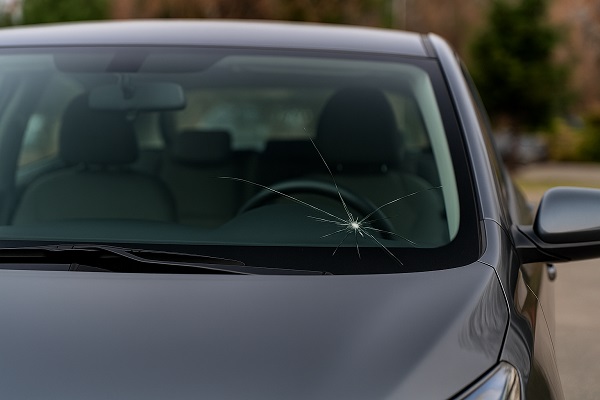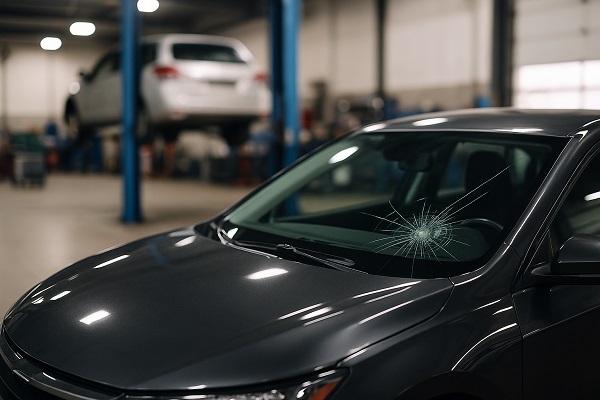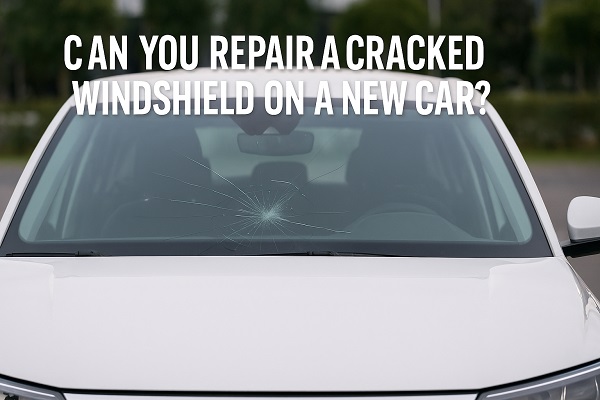When you notice a cracked windshield on a new car, your first thought might be frustration, followed quickly by wondering if it can be repaired or if it requires a full replacement. Because modern vehicles rely heavily on advanced safety systems, the question of repair versus replacement is an important one.
This guide explores whether a cracked windshield can be fixed on a new car, how repair decisions are made, and what you should know to protect both your vehicle and your wallet.
Why a Cracked Windshield Shouldn’t Be Ignored
A windshield isn’t just glass—it’s a structural safety component. On a new car, it often houses sensors and cameras used for ADAS (Advanced Driver Assistance Systems), which means damage can affect more than visibility.
- Compromised crash protection: The windshield supports roof strength in rollovers.
- Impaired airbag deployment: A weak windshield can prevent airbags from working properly.
- Reduced visibility: Even small cracks distort vision, especially at night.
That’s why even a minor crack or chip should be evaluated quickly.
Factors That Determine if Repair Is Possible

Not every crack can be fixed. Several factors decide whether a windshield repair is safe and effective.
Size of the Crack
- Cracks smaller than 6 inches are often repairable.
- Larger cracks usually require replacement.
Location of the Damage
- If the crack is in the driver’s line of sight, replacement is often recommended.
- Damage near the edges of the windshield is more likely to spread and weaken the structure.
Depth and Type of Crack
- Surface-level chips and “bull’s-eye” cracks are usually repairable.
- Deep cracks penetrating multiple layers of glass often need replacement.
Why Windshield Repair Is Different for New Cars
Repairing a cracked windshield on a new car comes with additional considerations.
Built-in Safety Systems
Many new vehicles have cameras, sensors, and heads-up displays integrated into the windshield. Any replacement requires recalibration, which adds cost and complexity.
Warranty and Insurance Factors
- Repairing the glass might preserve your original factory seal.
- Replacing the glass incorrectly can sometimes void certain warranties.
- Insurance often prefers repair over replacement because it costs less.
Pros and Cons of Repair vs. Replacement
Understanding the benefits and drawbacks of each option helps you make an informed decision.
Windshield Repair
Pros:
- Faster and less expensive
- Keeps the factory-installed windshield
- Environmentally friendly (no disposal of large glass panels)
Cons:
- Limited to small cracks and chips
- May still leave slight blemishes
- Not always suitable for cracks in critical areas
Windshield Replacement
Pros:
- Restores full strength and clarity
- Necessary for large or deep cracks
- Ensures safety features remain functional after recalibration
Cons:
- More costly and time-consuming
- Requires professional recalibration on modern cars
- Risk of improper installation if done by inexperienced technicians
The Process of Windshield Repair
When a repair is possible, technicians use a specialized process to restore the glass.
- Clean and prepare the damaged area.
- Inject a clear resin into the crack or chip.
- Cure the resin with ultraviolet light.
- Polish the surface to restore clarity.
This process stops cracks from spreading and restores much of the windshield’s strength.
When You Should Replace Instead of Repair

There are situations where replacement is the safer choice:
- Cracks longer than a dollar bill
- Damage in front of ADAS sensors or cameras
- Multiple chips or spreading cracks
- Deep cracks reaching the inner glass layer
- Cracks near windshield edges
Cost Considerations and Insurance Coverage
The cost difference between repair and replacement can be significant.
- Repair: Typically $50–$150
- Replacement: Often $300–$1,000+, especially with ADAS recalibration
Many insurance policies cover windshield repairs at no cost to you, since preventing a crack from spreading saves money in the long run. Replacements may require a deductible.
Tips for Protecting a New Car Windshield
Preventing cracks in the first place is ideal. A few habits help:
- Keep a safe following distance to avoid flying debris.
- Avoid slamming doors, which can worsen small chips.
- Park in shaded areas to prevent heat stress on glass.
- Use quality wiper blades to avoid scratches.
If you have a cracked windshield on a new car, repair may be possible if the damage is minor, shallow, and away from sensitive areas. However, because modern vehicles rely heavily on windshield-mounted sensors, replacement is often required for safety. Acting quickly ensures the crack doesn’t worsen and helps maintain your car’s value and safety systems.
Content reviewed and published by SLP AutoGlass Editorial Team.

